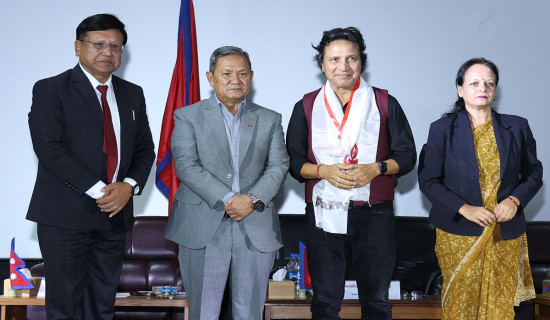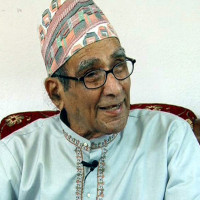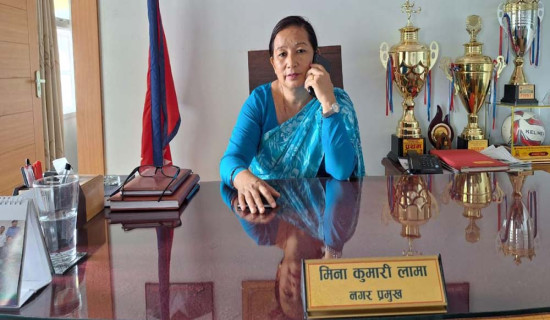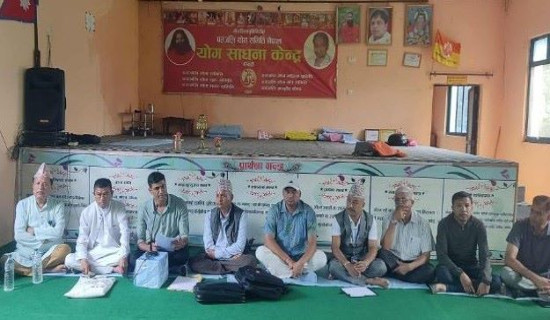- Monday, 1 September 2025
Ratnavali: Legacy In Shadows
Having a resilient and daring character, Ratnavali dedicated her life to facilitating the iconic Dixit family vis-à-vis the Rana dynasty. However, she was instead a shadowed woman hero, despite her playing a critical role in a paternalistic, male-dominated society of the past.
Ratnavali’s father, Ramchandra Mani Acharya Dixit, born in 1927 B.S., served as a pundit as well as in charge of Puja Kotha (chapel room) in the palace of Maharaja Shree 3 Chandra Shumsher JBR. He also provided astrological counselling to Maharaja, who ruled Nepal for 29 years while His Majesty the King was long since deposed by the Rana dynasty.
Of idolised personality, Ratnavali, granddaughter of Siromani (1881 BS-1972 BS) and a niece of Kasinath Acharya Dixit, assisted her father in religious performances in the palace. Hence, she was well-known and had direct access to Maharaja Chandra Shumsher and other key personalities in the lineage.
Ancestry of Ratnavali
According to genealogy (vanshavali), Sachhidananda Bhatta and Sadananda Bhatta of Kannauj, ancestors of the Dixit fraternity, who, after the Mughal invasion and bullying in Kannauj, Lucknow, immigrated via Uttarakhand, India, to the Sinja Valley of Jumla, the centre of the Khas and Malla Kingdom, which existed from the 11th to 14th centuries. They were employed in the palace of King Ranakeshar as pundits and counsellors. They were honoured with the title of Nawapa Hayek and “Acharya”, meaning scholar, by the king of Jumla. Siro Mani Acharya (1824-1901), son of Barapati (1726-1824) and grandfather of Ratnavali, became the 51st generation descendant of Schhidananda and Sadananda Bhatta (Acharya).
Highly impressed with the brilliance, modesty, and accredited academic qualifications attained in Banaras, the youngest brother of Jung Bahadur Kunwar Rana (1817-1877 AD), who had massacred around 29 nobles in the Kot Parva, Dhir Shumsher, a second man Commander-in-Chief who had fought a war with Tibetan forces in 1855 AD, hired Shiro Mani Acharya, grandfather of Ratnavali, and later was recommended to Shree 3 Maharaja Bir Shumsher JBR, 11th PM, as a pandit/guru (specialist) and astrologer to assist in state affairs. Dixit family heads such as Siro Mani, Kasinath Mani, Ramchandra Mani, Ram Mani, and Partha Mani from the Dixit Khalak (family) were most favoured by Shree 3 Rana Prime Ministers, especially Maharaja Bir Shumsher (1885–1901 AD), Maharaja Shree 3 Chandra Shumsher (1901–1929 AD), and Maharaja Juddha Shumsher (1932–1945 AD), who ruled for 6, 29, and 13 years, respectively, due to their unmatchable qualifications and capacities, including administrative and diplomatic skills and not least trustworthiness and nobility.
At the request of Ratnavali’s grandfather Siromani Acharya, Shree 3 Maharaja PM Bir Shamsher JBR in 1942 BS/1885 AD approved and funded at least one month-long intensive yajna (ritual) called “Somayag” and “Sautramaniyag” in Ramkatora/Banaras. The title of the Dixit (Dikshit) surname was thus accredited, and Shree 3 Maharaja also endorsed it.
A decisive moment
Imagine how shocking it was for Maharaja Chandra Shumsher JBR, an admirer of Brahmin pundits, when Ramchandra, a loved one, after the death of his beloved wife Kamalpriya, abruptly expressed his desire to go for a Kashi baas in Banaras with her daughter Ratnavali for spiritual life and salvation of austerity.
A leading and courageous woman, Ratnavali, the only daughter of Ramchandra, offered herself to take care of her old father, playing a pivotal role in unfettering her three elder brothers (Gopalmani, Parthamani, and Shivamani) from taking care of their old father Ramchandra, but solely got engaged in their profession and career building, which was her great self-sacrifice.
Ramchandra and Ratnavali were bid farewell by Maharaja Chandra Shumsher, who highly regarded them, giving them plenty of gifts, including cash, a monthly allowance, and a retirement pension. Ramchandra died at 91, after 20 years of his stay in Kashi, ending his era with the Rana dynasty.
A resilient woman
Ratnavali, a resilient and empowered woman living in dignity and self-respect, trained in the Indian culture, including getting associated with educated people in Banaras, preferred not to come to Kathmandu but instead fetched a job in the princely state palace of Maharaja Pateshwari Prasad Singh and Maharani Rajya Laxmi Devi (daughter of Sri 3 Maharaja Chandra Shumsher JBR) in Balarampur. Balarampur Maharani was comfortable with Ratnavali, who worked as a concierge and buddy for 15 years.
Parents dead, family broken, and already a childless widow, taking a train to Blarampur, a princely state of the British colonial era, 600 kilometres away from Banaras, was all challenging for Ratnavali. For a living, Ratnavali landed in the royal glamorous world, in contrast to her spiritual life with her old father in Banaras and direct access to Shree 3 Maharaja while in Kathmandu.
A late wireless message about Ratnavali’s demise at 70 (born 1961 B.S.) and a grand funeral was received in Kathmandu. It was a pity that nobody could present there from her childhood or married home (Maiti). A tragic story, indeed.
Reforms: Siromani and his son Kasinath and Ramchandra Mani and grandson Ram Mani became the key persons who exceptionally and officially worked with a series of successive Shree 3 Prime Ministers for 57 years during the Rana dynasty period (1846 AD-1951 AD).
The efficient “pen” part of Maharaja Shree Teen Chandra Shamsher made it somewhat easy for Dixit Khalak (family) to work. However, the “sword” part always remained as a risk of uncertainty and unpredictability, just like working with Bir Shumsher and Juddha Shumsher. However, highly educated and having diplomatic skills by lineage, adhering to divine ordinances, counselled monocratic Shree 3 Maharaja(s) and assisted them in initiating various vital developmental activities, including physical infrastructure activities and legal and administrative reforms, including on the external front, signing the Nepal–Britain Friendship Treaty of 1923, which recognised Nepal as an independent nation and an ally of the British Empire; and also sent 75,000 Gorkha troops to support Britain to fight in the First WW (1914-1918).
Ratnavali is among countless resilient and courageous women who left an indelible mark on society lost to history.
However, I regret that many books Dixit fraternity members wrote at times overshadowed Ratnawali. Therefore, several questions are yet unreciprocated, like ‘Lucy Gray’s footprints untracked through the snow’ in a poem by William Wordsworth.
(The author writes on integrated development issues and is also a freelancer.)
















